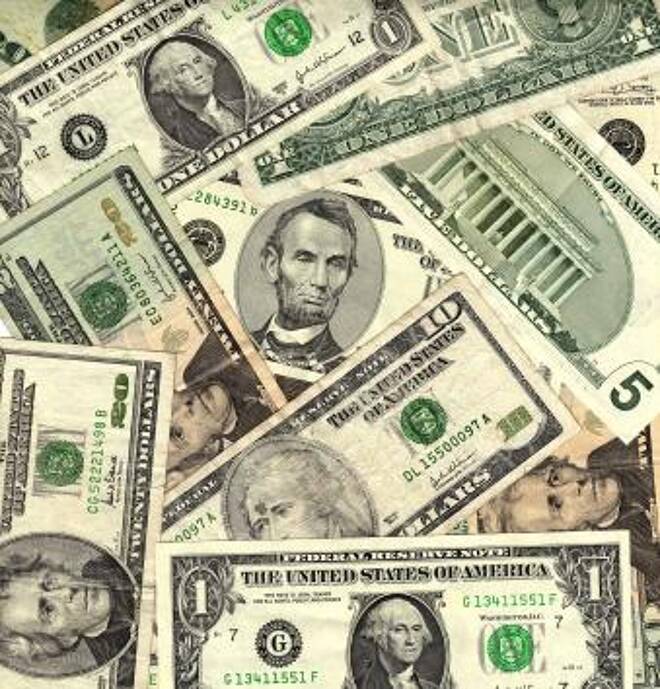Advertisement
Advertisement
Foreign Currencies Post Small Gains as U.S. Dollar Stumbles
By:
Foreign currency markets finished slightly better across the board last week, driven primarily by the weaker U.S. Dollar. The Greenback failed to maintain
Foreign currency markets finished slightly better across the board last week, driven primarily by the weaker U.S. Dollar. The Greenback failed to maintain the upside momentum from the previous week when it soared following the release of the stronger-than-expected U.S. Non-Farm Payrolls report.
The weaker dollar did not mean that investors were cutting bets for a December interest rate hike, the odds of a rate hike still sit at about 70%. The weakness in the dollar was likely generated by overbought technical conditions and mixed U.S. economic data.
Late in the week, U.S. retail sales disappointed again with a showing of 0.1 percent, below trader estimates of a 0.3 percent rise. Retail sales excluding automobiles, gasoline, building materials and food services rose 0.2 percent after an upwardly revised 0.1 percent gain in September. Traders were looking for a 0.4% reading.
There was a little hint of inflation according to the U.S. Producer Price Index data. The PPI for October fell 0.4 percent, recovering slightly from -0.5 percent in September. The report, however, missed the 0.2% estimate.
The EUR/USD finished higher after selling off earlier in the week. Speculation that the European Central Bank’s planned fresh stimulus will not be as large as previous estimated helped underpin the Forex pair. Additionally, the weaker stock market helped boost the funding element of the Euro.
In other news, the Euro Zone’s GDP figures missed trader estimates. According to preliminary estimates by Eurostat, Euro Zone’s Gross Domestic Product (GDP) grew a seasonally adjusted 0.3% in the third quarter of 2015, below the 0.4% expected by economists, and down from 0.4% in the previous quarter. The year-on-year change in GDP was 1.6%, below the expected 1.7%, but above the prior 1.5%.
The Euro was also able to overcome comments from ECB President Mario Draghi. Speaking before the European Parliament, Draghi said the outlook for core inflation “somewhat weakened,” and stated that downside risks from a global slowdown are “clearly visible”, thus adding to speculation that the ECB will expand QE in December. Some traders, however, believe that the expanded QE may not be as large as previously estimated because of the recent drop in the Euro.
The GBP/USD was also able to rebound after an early week sell-off. The Forex pair began to pick up strength after the release of the U.K. labor report. It showed that Average Earnings rose 3.0%, slightly below expectations. The Claimant Count Change was 3.3K versus the estimate of 1.6K. The unemployment rate declined slightly to 5.3% from 5.4%. Traders were disappointed with the wage growth, but the drop in the unemployment rate was encouraging. Nonetheless, sellers shied away from pressuring the market.
Also helping to trigger the short-covering were comments from BoE Chief Economist Andrew Haldane who said that looser policy was not his “central view”. This was probably the most bullish statement he could make. It was strong enough to trigger an acceleration to the upside.
The USD/CAD rose last week, driven higher by the probability of a December interest rate hike by the Fed and falling crude oil prices.
Crude oil prices fell over 7% to a 2-month low on oversupply concerns. This led to lower demand for the Canadian Dollar. Oil prices weakened after the U.S. Energy Information Administration reported a 4.22 million barrel build versus a 1.0 million barrel build estimate.
Expectations for a U.S. rate hike in December pressured gold, silver and platinum last week. The physical market also contributed to the weakness, led by further outflows from the largest gold-backed ETF.
December Comex Gold futures traded to nearly a six-year low while posting a fourth straight weekly loss, on expectations the Federal Reserve is set to raise its benchmark interest rate next month for the first time since 2006.
January Platinum futures also came under pressure from fund selling. Holdings of platinum ETFs were at a two-year low. In increase in supply from ETFs and other liquidation took platinum to a seven-year low. A drop in palladium prices also contributed to the selling pressure.
December Natural Gas also rose last week. Helping to boost prices was a smaller-than-estimated rise in inventories for the week-ended November 6. According to the U.S. Energy Information Administration, natural gas inventories rose by 49 billion cubic feet to 3.978 trillion cubic feet, the highest level on record.
Forecasts for colder weather also helped boost prices into the close on Friday. Cooler temperatures are now being forecast for the next two weeks.
About the Author
James Hyerczykauthor
James Hyerczyk is a U.S. based seasoned technical analyst and educator with over 40 years of experience in market analysis and trading, specializing in chart patterns and price movement. He is the author of two books on technical analysis and has a background in both futures and stock markets.
Advertisement
